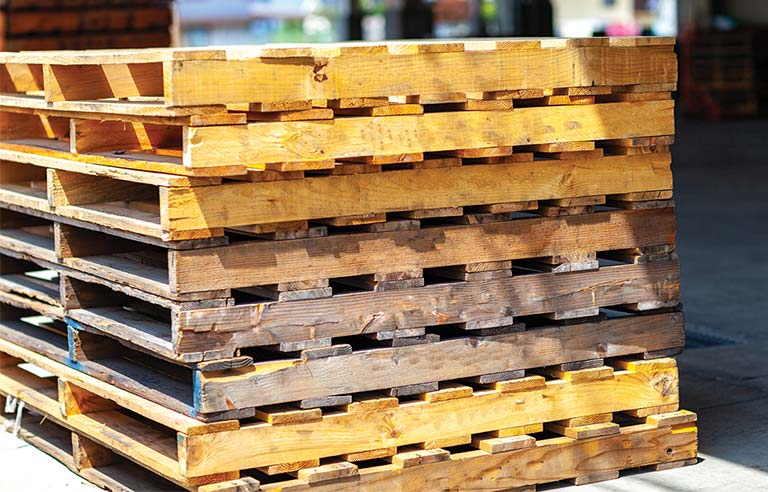First published by Safety+Health an NSC publication.

Puncture wounds, sprained ankles and broken toes are just some of the injuries that can result from handling empty skids and pallets. With about 2 billion pallets circulating in the United States, according to the U.S. Forest Service, the Texas Department of Insurance offers tips to material handlers to help them avoid injury. Among them:
- Inspect pallets and skids for hazards such as loose nails, splinters or other defects. And be cautious: Stacks of pallets stored outdoors for a long period of time may be home to wasps or snakes.
- Use safe lifting techniques. “Special care needs to be taken when lifting skids,” TDI says. “It usually requires two people of similar height lifting in unison to avoid injury. We need to bend at the knees and use the strong leg muscles to accomplish the lift. Keep the back straight and stay close to the object being lifted.”
- Don’t stack skids and pallets higher than 4 feet. Keep them flat – never stack them on end. When using separate skid runners and platforms, TDI recommends stacking them in a rack no more than 32 units high.
- Wear hand protection, such as leather work gloves, and foot protection.
- Make sure the stacks don’t block emergency equipment or exits. Pallets shouldn’t be sticking out into aisles where someone can bump into or trip over them. Workers also should not have to walk or step over them.
- Discard or repair unsafe units.
- Keep your work area clean.
McCraren Compliance offers many opportunities in safety training to help circumvent accidents. Please take a moment to visit our calendar of classes to see what we can do to help your safety measures from training to consulting.


